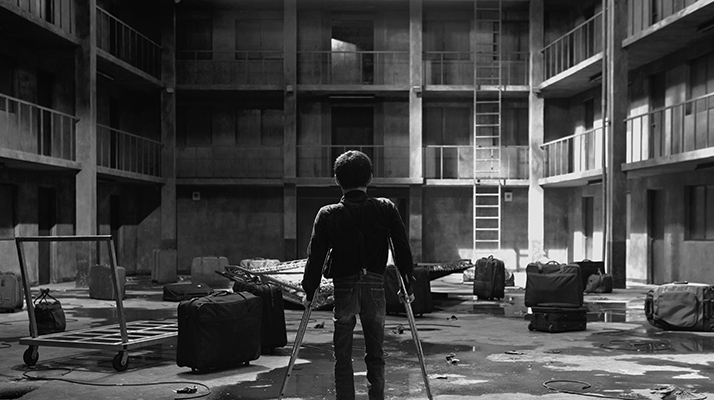Chen Chieh-Jen creates scenarios in his works in which “fiction” takes the place of—and thus reminds us of—that which is systematically excluded from dominant paradigms of “representation” in the political sense of the word. The staged scenarios of Chen’s works are shot at the actual sites of the history or the events or conditions he refers to, and they involve a collective process among his protagonists that unfolds while the film’s set is being built.
The theme of Happiness Building I is the generation of Taiwanese people born in the 1980s. Facing increasingly precarious lives, this is a generation for whom anxiety has become permanent. This situation originated with the neoliberal reforms implemented by the Taiwanese government beginning in 1984. These laws have since affected countless families, eroding labor rights, housing rights, and access to social services. The laws “passed a sentence on the futures” of the younger generation.
The characters in Happiness Building I are based on young people who wrote short reflections on their individual life histories for Chen. The young people were from different backgrounds, but all lacked stable employment. Their stories became the basis for a fictional narrative composed by Chen. Happiness Building I is set in an old apartment building which will soon be demolished and replaced by a new structure. The tenants who live there prepare to leave one by one. Inside the apartment building we see an unemployed, a young women who has no family, a lesbian whose father committed suicide after being out of work for a long time, and a female sound artist who left home after her parents divorced. Outside the apartment building, other figures assemble: a single woman exhausted from protesting the Temporary Employment Act, a female laborer who works at a computer recycling center, a physically impaired actor working in a small theater who has long engaged in “silent standing” as a form of social action, a woman who dropped out of school after becoming disenchanted with the educational system and went on to establish an archive on the LoSheng Leper Sanatorium, and a young social activist has also come to help move the possessions of elderly person who live there alone, but who are already gone, and all that are left are their luggage. Happiness Building I is an image for the atomization of individuals whose fates, under the new economic dictate, have become “privatized” by society.
Chen Chieh-Jen, born 1960 in Taiwan, lives and works


